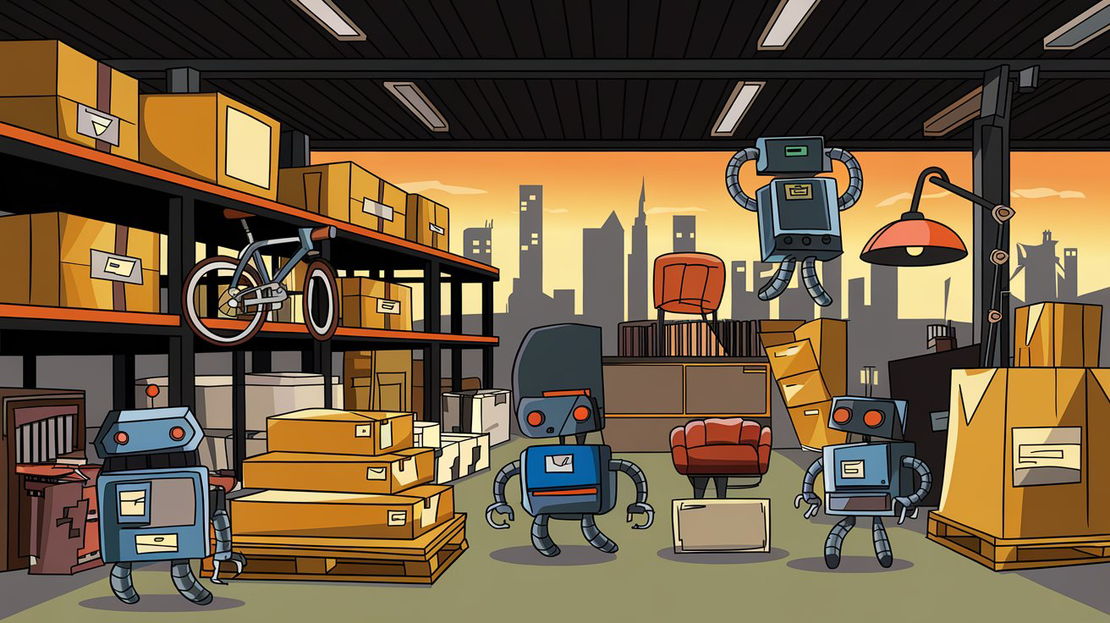
Revolutionizing E-commerce with UX: Enhancing Warehouse Efficiency
- Marta Kaczor
- Ux , E commerce , Technology
- December 3, 2024
Table of Contents
Understanding the importance of UX design in Sotwarehouse applications is essential for eCommerce managers aiming for operational excellence. This article provides insights into how UX designers contribute to creating seamless experiences in warehouse systems, addressing pain points that hinder effectiveness. We will explore the intersection of user experience and technology, emphasizing the role these designers play in software usability, data visualization, and employee training. Gain practical knowledge on how investing in UX design can lead to measurable improvements in your warehousing operations.
The Crucial Role of UX Design in Enhancing E-commerce Warehouse Operations
In the fast-paced world of e-commerce, how well warehouse operations run can significantly affect overall business success. A user-friendly interface (UI) is crucial for helping staff navigate systems easily, which can dramatically cut down on training time. When new hires can quickly get up to speed, it leads to lower onboarding costs. For example, a simple and streamlined interface can reduce training from several days to just a few hours, enabling teams to start contributing right away.
Additionally, effective user experience (UX) design is vital for minimizing mistakes in warehouse operations. By implementing intuitive workflows and clear visual cues, businesses can:
- Reduce mispicks
- Decrease miscounts
- Lower costs and time spent on corrections
Imagine if better UX resulted in a 20% decrease in order fulfillment errors; this would boost customer satisfaction and save valuable resources. Ultimately, investing in thoughtful UX design goes beyond just making things look good; it’s about creating a more efficient, error-resistant environment that enhances productivity and supports growth in the competitive e-commerce landscape.
Enhancing Usability: Tackling Warehouse Application Pain Points
To address the challenges often encountered in warehouse operations, it’s crucial to really understand user experience. UX designers dive deep into user research to identify specific pain points within current systems. This approach ensures that the solutions created truly meet the needs of the staff, leading to better usability.
When usability improves, businesses can see a significant 30% drop in operational errors during order fulfillment. This reduction means fewer mispicks and miscounts, which ultimately saves time and resources. For example, in a warehouse that processes 10,000 orders each month, a 30% decrease in errors could lead to 3,000 fewer mistakes to fix. This allows teams to shift their focus to more strategic tasks instead of constantly correcting issues.
This mindful approach to usability not only streamlines workflows but also fosters a culture of accountability among employees. As staff gain more confidence in their roles, the entire operation runs more smoothly, helping to achieve broader goals of growth and customer satisfaction in the competitive e-commerce landscape.
Harnessing Data Visualization for Effective Warehouse Management
Effective data visualization is crucial for improving warehouse management. By transforming complex information into clear and engaging visuals, decision-making speed can jump by up to 25%. This boost allows teams to quickly adapt to changes in inventory, orders, and other operational challenges, making them more responsive to market needs.
Additionally, straightforward visual representations lighten the cognitive load for employees, which helps them work more efficiently. For example, when warehouse managers can easily grasp stock levels through user-friendly dashboards, they can make smart decisions without wading through excessive data. This clarity not only enhances productivity but also empowers employees to concentrate on essential tasks instead of trying to decode confusing reports.
Imagine a warehouse that adopts a real-time data visualization tool. By visually tracking the flow of goods, staff can easily identify:
- Bottlenecks
- Overstock situations
This enables proactive adjustments, leading to a more agile operation. Such insights improve overall performance and customer satisfaction while reducing costly errors.
Enhancing Employee Training Through UX Design
Investing in user experience (UX) design not only boosts warehouse operations but also makes training new employees a lot smoother. Studies show that a well-designed training interface can reduce onboarding time by up to 40%. This means new hires can hit the ground running faster, saving both time and money for the company.
Consider this: if onboarding costs a company $1,000 for each new employee, a 40% cut means a savings of $400 per hire. This efficiency allows teams to be productive sooner, which ultimately benefits the company’s bottom line.
Additionally, good UX design can improve employee engagement and retention rates by about 25%. A well-crafted training platform keeps employees interested and motivated. Here are some key elements that make a difference:
- Interactive training materials
- Visually appealing content
- Engaging formats
Imagine an employee who feels engaged in their training journey, leading to a longer tenure and lower turnover costs. By creating an inviting environment, businesses build loyalty and enhance team spirit, fostering a workplace culture that encourages growth and innovation in the e-commerce sector.
Summary
In the dynamic realm of e-commerce, optimizing warehouse operations is pivotal to success, and user experience (UX) design plays a critical role in this. A well-crafted interface not only streamlines training, potentially cutting onboarding time by up to 40%, but also enhances employee engagement and retention. This efficiency translates directly to cost savings and boosts productivity, allowing teams to focus on strategic tasks rather than correcting errors.
Moreover, intuitive UX design minimizes operational mistakes, with studies indicating a possible 30% reduction in fulfillment errors. This improvement not only enhances customer satisfaction but also empowers employees to take ownership of their roles. As we consider these insights, how can integrating UX principles into warehouse management reshape our operational strategies? Are we fully leveraging data visualization tools to drive informed decision-making and responsiveness? Embracing a thoughtful UX approach may well be the key to fostering a more agile and successful e-commerce environment.


